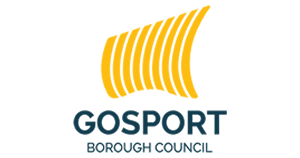West of the River

Introduction
West of the River is one of a number of conservation areas within the Borough of Gosport. It lies within the Alver Valley, the largest Greenspace in Gosport of 583 acres.
West of the River itself is 30.7 acres and is situated West of the River Alver. Although it has been open access land for many years, few people are aware of this area. It's main use has been by bird watchers and dog walkers.
There are a variety of interesting habitats, the most important being the reedbed. Access to the area is gained by crossing Apple Dumpling Bridge (north of Carter's Copse car park), and following the surfaced road. Bear right through open woodland to pick up the waymarked trail, crossing a stile. The route follows a wooded path, over a boardwalk and out onto a field. In wet weather wellies are essential.
The Reedbed
The reedbed is one of the largest remaining reedbeds in England. The reed supports a large number of insect species which in turn support birds such as reed and sedge warblers. Cettis warbler, once rare, is now locally on the increase. The reedbed is managed by annual cutting of a section which encourages new growth. The balance of water is also important.
Please do not enter the reedbeds as they are a wildlife sanctuary.
The Ponds
There are three ponds West of the River. The first is Kingfisher Pond, a narrow linear pond with reedmace and water plantain. Following the waymarkers you find Willow Trees Pond. Cuckoo flower and Ragged Robin grow well here. There are also many dragon and damselflies.
The third pond is Birch Trees Pond with it's windblown birches. This pond is very shallow and suffers from grass invasion.
Grassland
West of the River has a large area of open grassland. Some is kept very short by rabbit grazing, and is rich in plantlife. Other areas have longer grass with fleabane, teasels and thistles present. These plants are good for butterflies and 17 species have been recorded. These include Common Blues and Painted Ladys. Green Woodpeckers are common, often seen feeding on the grass, looking for insects, especially ants. Other birds include, Swifts, Swallows and Goldfinches. Larger mammals can be seen occasionally, especially fox and roe deer.
To reach West of the River you first pass through a narrow strip of ancient woodland where oaks of approximately 150-200 years old are present. These oaks can support up to 350 different types of insect from aphids to stag beetles. Crossing the boardwalk you will notice to your left a marsh area, rich in yellow iris and hemlock water-dropwort. A ditch connects the marsh to Kingfisher Pond. Areas of scrub are also present namely, Willow, Gorse and Bramble. These provide good homes for insects which in turn attract small mammals and birds.
Areas of scrub are coppiced (cut down to the ground) periodically to rejuvenate them.




